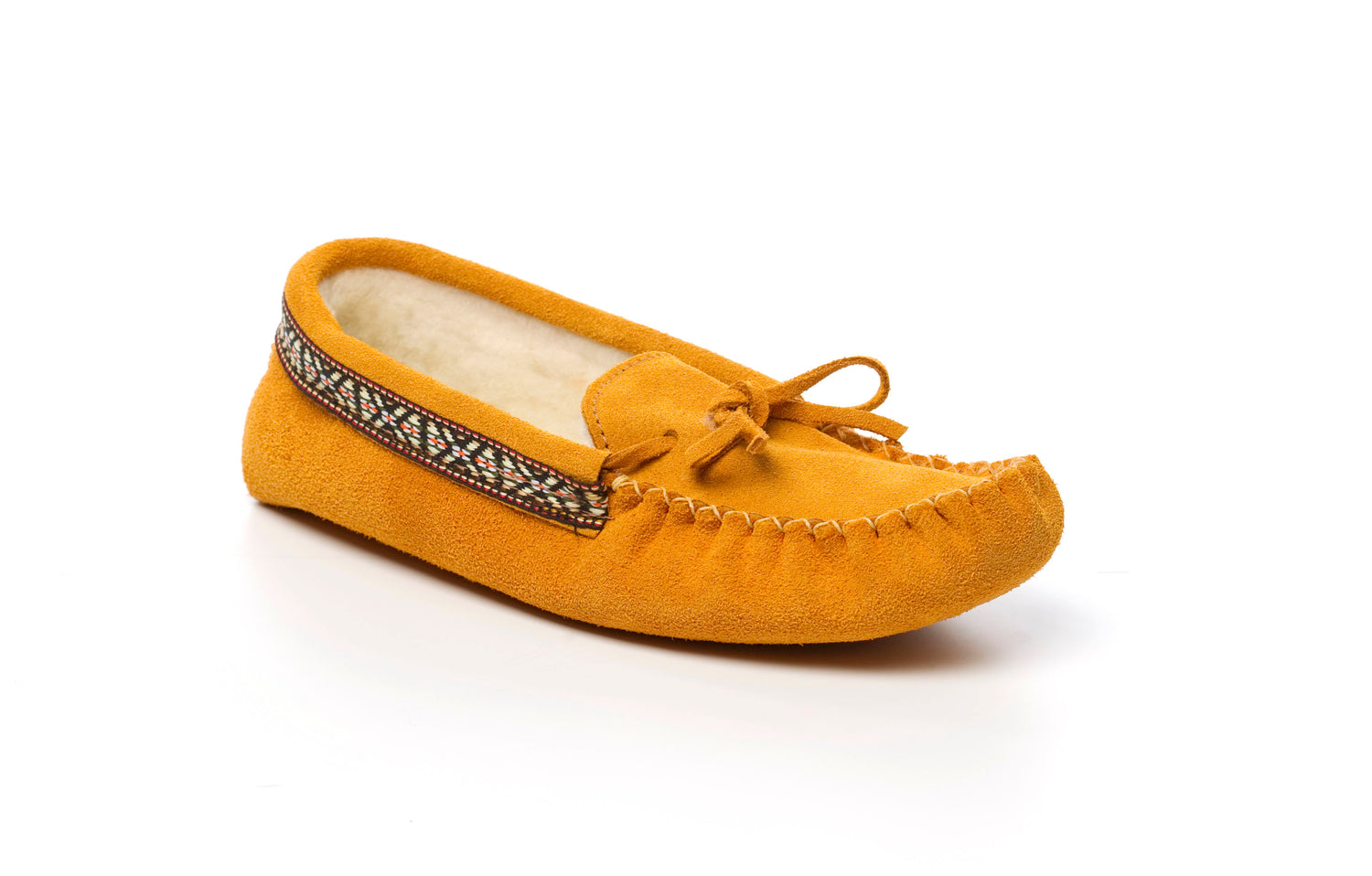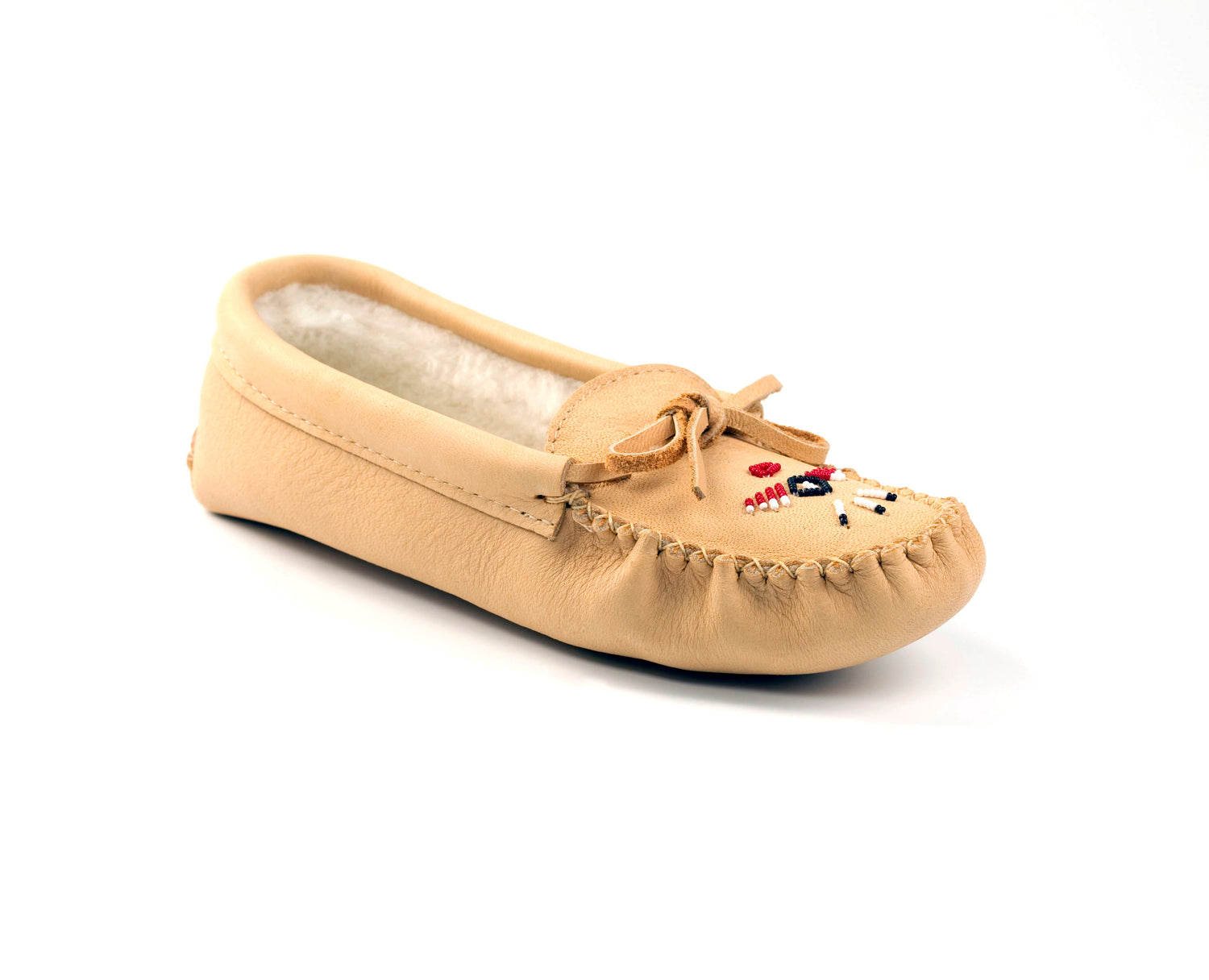
A Closer Look: The Anatomy of Beaded Moccasins
Share

A Closer Look: The Anatomy of Beaded Moccasins
Beaded moccasins are a stunning testament to Indigenous artistry and craftsmanship. Beyond their beauty lies a careful construction using a variety of traditional and contemporary materials. Let's delve into the key components:
1. Sole:
The sole of a beaded moccasin is the foundation of the shoe, providing support and durability. Traditionally, soles were crafted from thick, durable leathers like elk, deer, or moose hide, which were tanned and softened using natural methods. These leathers were chosen for their strength and resistance to wear and tear, ensuring that the moccasins would last for many years of use. In modern times, softer leathers, suede, or even rubber may be used for added comfort and durability, especially for moccasins intended for casual wear.
2. Upper:
The upper of a beaded moccasin is the part that covers the foot, and it is typically crafted from soft and pliable leathers such as buckskin or suede. These leathers are chosen for their flexibility and comfort, allowing the moccasin to conform to the shape of the foot. The upper can be cut from a single piece of leather, or it can be constructed using multiple pieces sewn together, depending on the style of the moccasin. The upper is often adorned with intricate beadwork, creating beautiful and unique designs.
3. Beaded Panels:
The beaded panels are the most striking feature of a beaded moccasin, adding color, texture, and visual interest. Traditionally, these panels were made using glass beads, porcupine quills, or even shells, which were carefully sewn onto the leather using sinew or thread. The beadwork can cover the entire upper of the moccasin, or it can be confined to specific areas, such as the vamp (the area over the toes) or the cuff. The designs of the beadwork are often symbolic, representing cultural beliefs, stories, or personal experiences.
4. Lining:
The lining of a beaded moccasin provides warmth, comfort, and protection for the foot. Traditionally, moccasins were lined with soft furs such as rabbit, beaver, or sheepskin, which provided insulation and helped to absorb moisture. In modern times, synthetic materials may be used for the lining, as they are often more durable and easier to care for. The lining is typically attached to the inside of the upper using a strong thread or glue.
5. Thread:
The thread used to sew a beaded moccasin is an important factor in its durability and overall quality. Traditionally, moccasins were sewn with sinew, a strong, natural fiber obtained from animal tendons. Sinew is incredibly strong and flexible, making it ideal for sewing leather and beadwork. In modern times, strong nylon or waxed thread may be used, as it is often more readily available and easier to work with. The thread is used to sew the various parts of the moccasin together, as well as to attach the beadwork and other decorative elements.
6. Decorative Elements:
In addition to beadwork, beaded moccasins may also feature other decorative elements, such as fringe, concho, and embroidery. Fringe is often added to the cuffs or sides of the moccasins for aesthetic appeal and to add movement. Concho are decorative metal or bone disks that can be attached to the moccasins for embellishment. Embroidery can also be used to create intricate designs on the leather, adding another layer of visual interest. These decorative elements can vary widely depending on the style of the moccasin and the cultural traditions of the artist.
7. Cuff:
The cuff of a beaded moccasin is the part that extends above the ankle, providing additional support and warmth. It is typically made from the same leather as the upper, but it can also be made from a contrasting material. The cuff is often adorned with beadwork or other decorative elements, and it may also feature fringe or tassels. The cuff helps to keep the moccasins securely in place on the foot, and it also adds to the overall aesthetic appeal of the shoe.
Important Note: The materials and construction techniques used in beaded moccasin making vary significantly across different Indigenous cultures. This is a general overview, and there is a rich diversity of styles and traditions.
This article provides a basic understanding of the components that contribute to the beauty and functionality of beaded moccasins.



